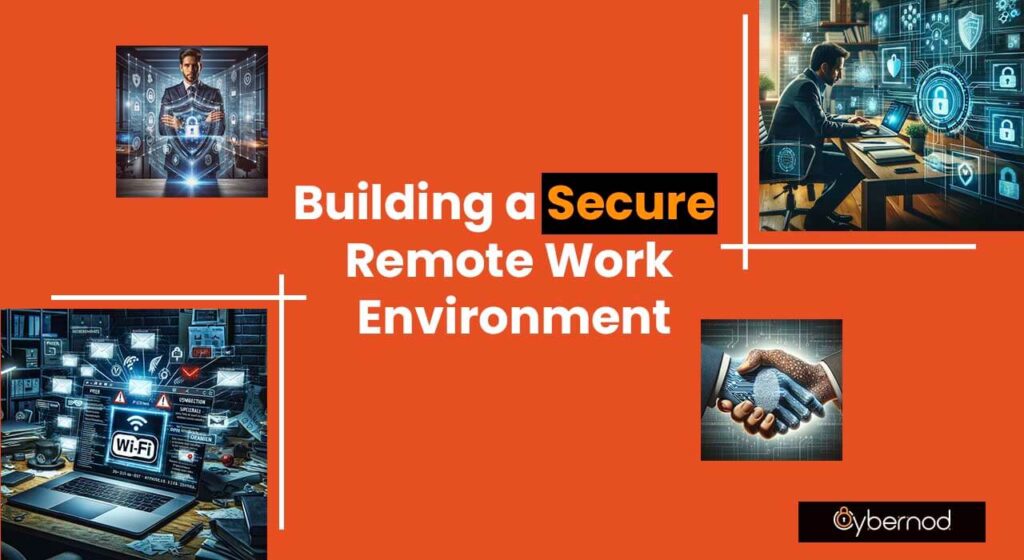
The Evolving Landscape of Remote Work and Cybersecurity
The digital landscape has undergone a significant transformation in recent years, with a remarkable surge in remote work arrangements. The surge in remote work arrangements, fueled by advancements in technology and the global pandemic, has introduced novel cybersecurity challenges.
Physical office environments traditionally offered a layer of security through controlled access and centralized IT infrastructure. However, the dispersed nature of remote work exposes organizations to an expanded attack surface. This translates to a heightened vulnerability to cyber threats, as sensitive data and company resources are now accessible from various locations and potentially unsecured devices.
According to the Verizon 2023 Data Breach Investigations Report https://www.verizon.com/business/resources/reports/dbir/, cyberattacks against small and medium-sized businesses (SMBs) increased by a staggering 68% in 2022. This alarming statistic underscores the critical need for robust cybersecurity measures specifically tailored to the remote work environment.
Building a secure remote work environment becomes paramount for businesses of all sizes, particularly for SMBs which may have limited resources dedicated to cybersecurity. This article serves as a comprehensive guide, equipping businesses with the knowledge and strategies necessary to safeguard their data and operations in the ever-evolving landscape of remote work.
Unique Challenges of Remote Work Environments

The traditional, centralized security model of a physical office is significantly disrupted by the dispersed nature of remote work. This shift introduces a multitude of challenges that organizations must address to effectively safeguard their data and systems.
- Expanded Attack Surface: A dispersed workforce inherently broadens the attack surface. With company data and resources accessible from various, potentially unsecured devices, the number of entry points for cybercriminals multiplies significantly. This dispersed infrastructure makes it more difficult to implement consistent security measures and monitor potential vulnerabilities.
- Securing Personal Devices: The widespread use of personal devices for work purposes presents a unique challenge. Businesses often lack complete control over the security posture of these devices. Weak passwords, outdated software, and a lack of security awareness amongst employees can significantly elevate the risk of data breaches and malware infections.
- Phishing and Social Engineering: Remote workers are particularly susceptible to phishing scams and social engineering tactics. Cybercriminals can exploit the increased reliance on digital communication to trick employees into revealing sensitive information or clicking on malicious links.
These vulnerabilities underscore the importance of implementing a robust cybersecurity strategy specifically designed for the remote work environment. Cybersecurity assessments can be a valuable tool in identifying potential weaknesses within the remote work infrastructure. Businesses should also consider offering cybersecurity awareness training to educate employees on recognizing and mitigating cyber threats like phishing attempts.
By acknowledging these unique challenges and taking proactive measures, organizations can significantly reduce the risk of cyberattacks and safeguard their sensitive data in the age of remote work.
Implementing a Secure Remote Work Policy

In the dynamic landscape of remote work, establishing a well-defined cybersecurity policy is the cornerstone of a comprehensive security strategy. This policy serves as a formal document outlining the guidelines and procedures employees must adhere to when working remotely.
Device Security
- Company-owned devices:
- Strong password policies: Enforce the use of complex passwords with a minimum length requirement, including a combination of upper and lowercase letters, numbers, and symbols. Regularly prompt employees to update their passwords.
- Encryption: Implement data encryption practices to safeguard sensitive information at rest and in transit. This renders data unreadable even if intercepted by unauthorized individuals.
- Remote wipe capabilities: Equip devices with remote wipe functionality to allow for the secure erasure of all data in case of loss or theft.
- Personal devices:
- Acceptable usage guidelines: The policy should clearly define the acceptable use of personal devices for work purposes. This may include restrictions on downloading unauthorized software or storing sensitive data on personal devices.
- Security software: Encourage employees to install and maintain up-to-date antivirus, anti-malware, and firewall software on their personal devices used for work.
Access Control
- Principle of least privilege: Grant employees the minimum level of access required to perform their job duties. This reduces the potential harm resulting from a compromised account.
Data Security
- Data encryption: Enforce data encryption practices to protect sensitive information both at rest (stored on devices) and in transit (transmitted across networks). This significantly reduces the risk of data breaches even if cybercriminals gain access to the system.
- Data sharing and download restrictions: Implement limitations on data sharing and downloading permissions. This helps prevent unauthorized access to sensitive information and minimizes the risk of data leaks.
Incident Reporting
- Clear procedures: Establish a well-defined process for reporting suspicious activity or security breaches. This should include a designated contact person or department responsible for investigating and addressing such incidents.
A comprehensive cybersecurity assessment can be instrumental in identifying potential vulnerabilities within the organization’s remote work infrastructure. This assessment can guide the development and implementation of a robust security policy.
By incorporating these essential elements, businesses can create a secure remote work environment that minimizes the risk of cyberattacks and safeguards sensitive data. Remember, cybersecurity is an ongoing process, and the policy should be reviewed and updated regularly to adapt to evolving threats and technological advancements.
Technological Solutions for Remote Work Security
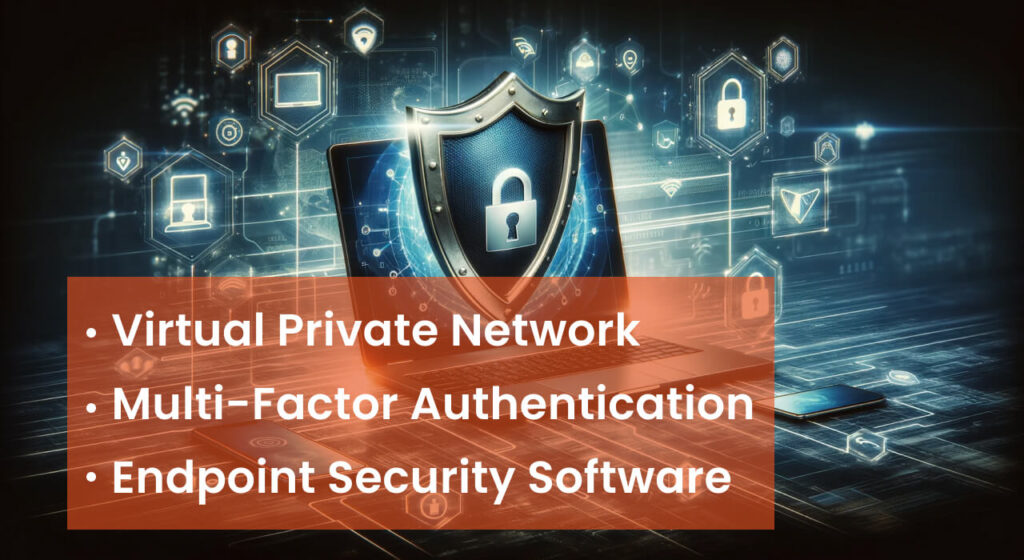
The dispersed nature of remote work environments necessitates the implementation of robust technological solutions to bolster cybersecurity. Here, we explore various tools and strategies that can significantly enhance the security posture of remote workforces.
- Virtual Private Network (VPN): A VPN encrypts data traveling between a remote device and the organization’s network, creating a secure tunnel. This encryption safeguards sensitive information from unauthorized access, even on public Wi-Fi connections.
- Multi-Factor Authentication (MFA): MFA adds an extra layer of security beyond traditional passwords. In addition to a password, users may be required to enter a unique code generated by an authenticator app or received via SMS. This substantially lowers the risk of unauthorized entry, even in the event of a compromised password.
- Endpoint Security Software: Equipping remote devices with endpoint security software is crucial. This software typically includes:
- Anti-virus and Anti-malware: These programs continuously scan devices for malicious software and prevent them from infecting the system.
- Intrusion Detection and Prevention Systems (IDS/IPS): These tools monitor network traffic for suspicious activity and can block potential cyberattacks.
Cloud-based Security Solutions
Cloud computing offers a plethora of security benefits for remote work environments:
- Data Storage: Cloud storage providers offer secure and scalable data storage solutions. This eliminates the need for physical servers on-site, reducing the attack surface.
- Access Control: Cloud-based platforms enable granular access control, allowing administrators to define user permissions and restrict access to sensitive data.
- Threat Detection: Many cloud providers offer advanced threat detection capabilities that continuously monitor for suspicious activity and potential breaches.
Summary of Technological Solutions
| Solution | Description | Benefit |
|---|---|---|
| VPN | Encrypts data traffic between remote devices and the organization's network. | Protects sensitive information on public Wi-Fi connections. |
| MFA | Adds an extra layer of security beyond passwords. | Reduces the risk of unauthorized access. |
| Endpoint Security Software | Protects devices from malware and other cyber threats. | Safeguards devices used for remote work. |
| Cloud-based Security Solutions | Secure data storage, access control, and threat detection. | Offers scalability and centralized security management. |
While these solutions offer significant advantages, it’s crucial to remember that cybersecurity is a layered approach. Technological solutions should be implemented in conjunction with strong security policies and employee awareness training to create a comprehensive defense against cyber threats.
By leveraging a combination of technological advancements and a culture of cybersecurity awareness, organizations can effectively safeguard their data and operations in the dynamic landscape of remote work.
Importance of Security Awareness Training
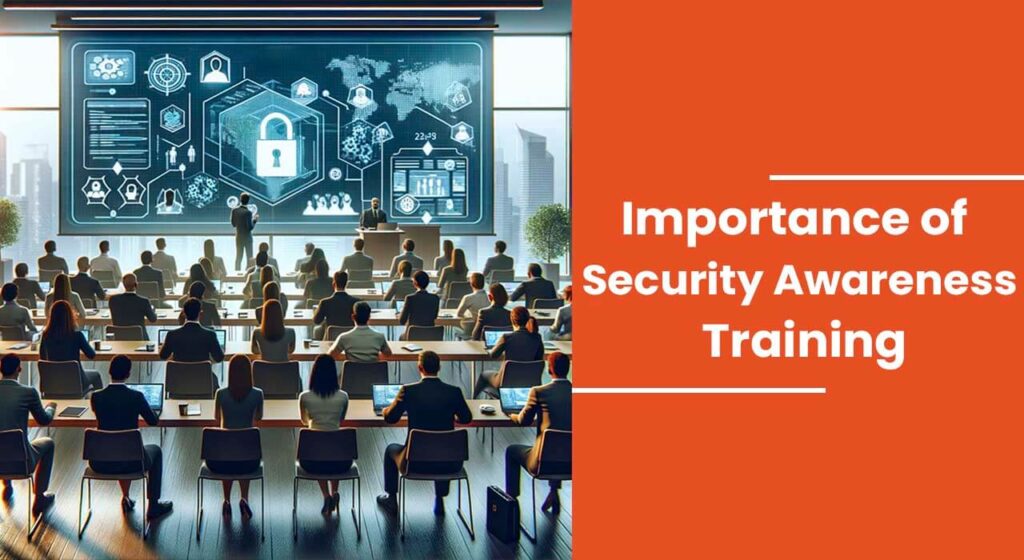
The human element remains a significant vulnerability in the ever-evolving cybersecurity landscape. Even the most robust technological defenses can be compromised if employees lack the awareness and knowledge to identify and mitigate cyber threats.
Security awareness training plays a pivotal role in empowering employees to become active participants in safeguarding the organization’s data and systems. This training provides them with the essential skills to:
Recognize phishing scams and social engineering tactics
Employees are trained to identify suspicious emails, phone calls, or messages that attempt to trick them into revealing sensitive information or clicking on malicious links.
- Implement secure password practices: Training emphasizes the importance of creating strong, unique passwords and avoiding password reuse across different accounts.
- Report suspicious activity: Employees are encouraged to report any unusual activity or potential security breaches to the designated IT team or security department.
Investing in cybersecurity awareness training (https://www.sans.org/security-awareness-training/) not only bolsters the organization’s overall security posture but also fosters a culture of cybersecurity awareness within the workforce. This proactive approach significantly reduces the risk of falling victim to cyberattacks and safeguards sensitive data in the remote work environment.
Additional Resources:
- National Initiative for Cybersecurity Careers and Studies (NICCS): https://niccs.cisa.gov/
By prioritizing employee education and fostering a culture of cyber vigilance, organizations can significantly strengthen their defenses against cyber threats in the age of remote work.
Investing in cybersecurity awareness training not only bolsters the organization’s overall security posture but also fosters a culture of cybersecurity awareness within the workforce. This proactive approach significantly reduces the risk of falling victim to cyberattacks and safeguards sensitive data in the remote work environment. To understand the financial impact of cyberattacks and the importance of cybersecurity investments, read our follow-up article The Cost of a Cyberattack: “Why Investing in Cybersecurity Matters for Small Businesses“
Conducting Regular Security Assessments
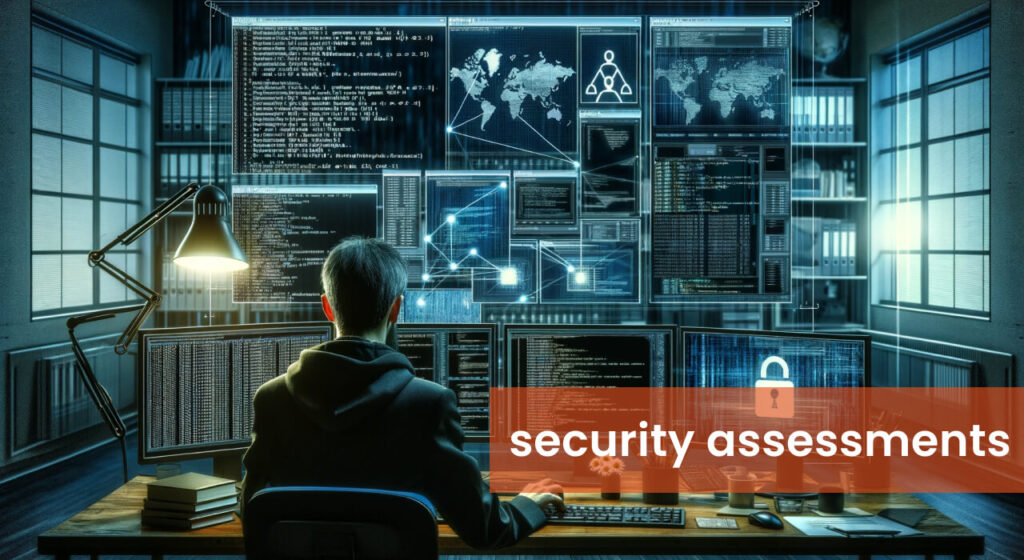
Proactive measures are crucial in safeguarding the remote work environment. Regular security assessments serve as a vital tool for identifying potential weaknesses and vulnerabilities within the organization’s security posture.
These assessments act as a diagnostic measure, providing valuable insights into areas that require attention and strengthening. By proactively addressing vulnerabilities, organizations can significantly reduce the risk of cyberattacks and data breaches.
There are various types of security assessments that can be employed:
- Vulnerability scanning: Automated tools systematically scan devices, systems, and software for known weaknesses and misconfigurations. This helps identify potential entry points that cybercriminals could exploit.
- Penetration testing: This approach simulates real-world cyberattacks, attempting to gain unauthorized access to systems and data. Penetration testing exposes vulnerabilities that may not be detected by automated scans and provides valuable insights into the effectiveness of the organization’s security defenses.
Regular security assessments, particularly cybersecurity risk assessments (https://www.nist.gov/privacy-framework/nist-sp-800-30), are essential for organizations of all sizes, especially those with remote workforces. The National Institute of Standards and Technology (NIST) Cybersecurity Framework (https://www.nist.gov/cyberframework) provides a comprehensive guide for conducting effective security assessments and implementing a risk-based approach to cybersecurity.
By incorporating regular assessments into their security strategy, organizations can proactively identify and address vulnerabilities, bolstering their defenses and safeguarding sensitive data in the dynamic landscape of remote work.
Best Practices for Small Businesses
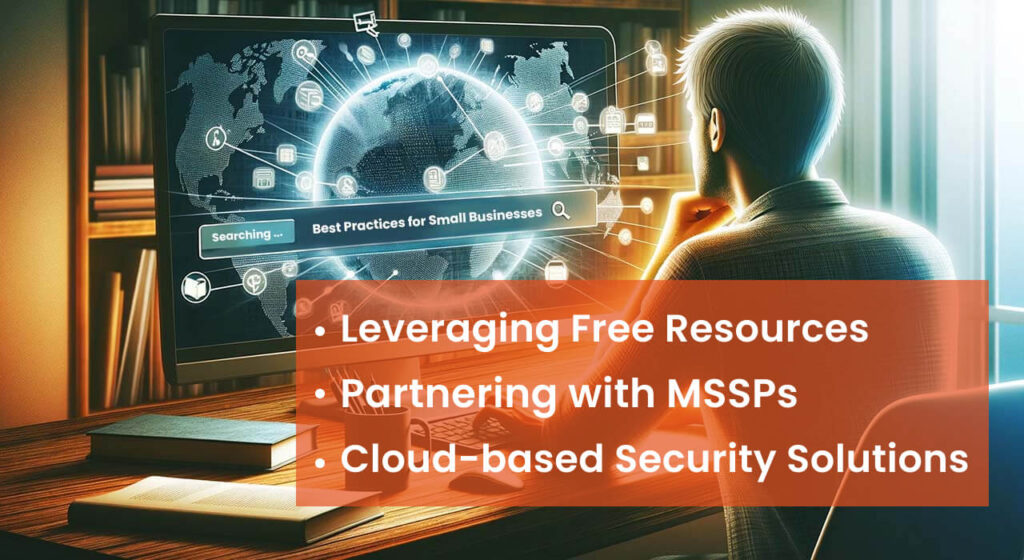
Small businesses often face unique challenges in securing their remote work environment due to limited resources. However, several practical steps can be taken to significantly improve their cybersecurity posture:
- Leveraging Free Resources: Government agencies and industry associations frequently offer a wealth of free cybersecurity resources tailored towards small businesses. These resources can provide valuable guidance on implementing the best practices, conducting security awareness training, and identifying potential vulnerabilities.
- Partnering with MSSPs: Managed Security Service Providers (MSSPs) offer a cost-effective solution for small businesses seeking additional expertise. MSSPs can provide a range of security services, including vulnerability scanning, intrusion detection, and security incident response, which may be beyond the internal capabilities of a small organization.
- Cloud-based Security Solutions: Cloud computing offers several advantages for small businesses. Cloud providers often have robust security measures in place and can offer scalable security solutions that grow alongside the business needs.
Key Takeaways:
- Utilize free cybersecurity resources.
- Partner with MSSPs for additional expertise.
- Leverage cloud-based security solutions for scalability.
By adopting these practices, small businesses can significantly enhance their cybersecurity posture and mitigate the risks associated with remote work environments.
The proliferation of remote work arrangements necessitates a robust cybersecurity strategy to safeguard sensitive data and business operations. This article has highlighted the importance of implementing a layered approach that encompasses:
- Well-defined security policies: Clear guidelines addressing device security, data access, and incident reporting procedures.
- Technological solutions: Utilizing VPNs, MFA, endpoint security software, and cloud-based security tools.
- Security awareness training: Equipping employees with the knowledge and skills to recognize and mitigate cyber threats.
- Regular security assessments: Proactively identifying vulnerabilities through vulnerability scanning and penetration testing.
Cybersecurity is an ongoing process, and vigilance is paramount. By continuously adapting their security posture and staying informed about emerging threats, organizations can effectively navigate the evolving landscape of remote work and protect their valuable data.
Additional Resources:
- Small Business Administration (SBA) Cybersecurity Resources: https://www.cisa.gov/
Remember, a comprehensive cybersecurity strategy is essential for businesses of all sizes to thrive in the secure remote work environment.
Categorized in:
Comments